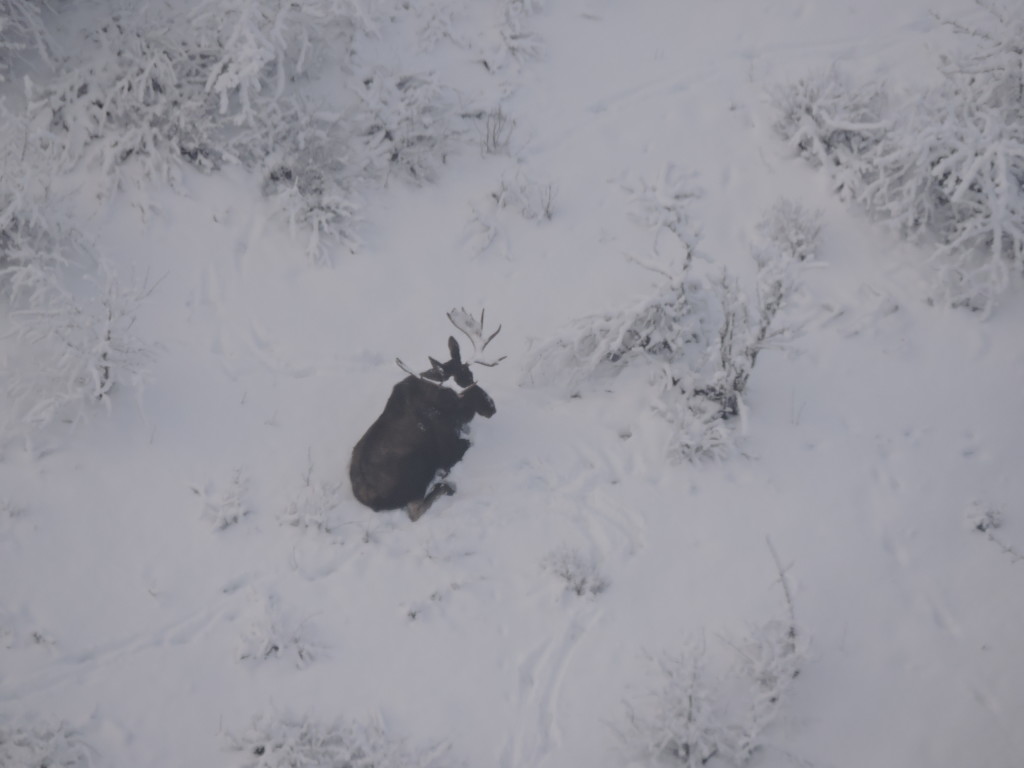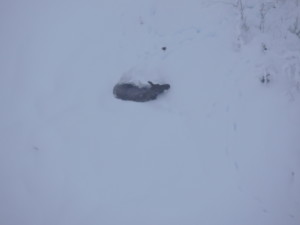
A bull moose seen during Koch’s survey of the valley. (Carl Koch)
In December, the Alaska Department of Fish and Game conducted an aerial moose count in the Chilkat Valley. Biologists counted 183 moose, which is just under the ten-year average. Last fall, Fish and Game closed moose hunting early, partly due to unreliable survey information. They say the survey data they gathered this time around is more dependable.
Juneau-based Fish and Game Biologist Carl Koch says as soon as the first snow fell in Haines, he starting hoping for the right weather conditions to get in the air and start counting moose.
“It took a little while to be able to do it because of weather,” Koch said. “When it was good in Haines it wasn’t in Juneau, but on Dec. 19 I flew up there. The conditions were pretty good, there was six to eight inches of snow on the ground.”

A cow moose (or bull with no antlers) standing in deep snow. (Carl Koch)
Koch spent most of the daylight hours on Dec. 19 in flight, scouting moose. He counted 183 total, 24 of which were bulls. Four of them had only one antler, which means that some of the moose without antlers could have been bulls who lost their antlers already. Koch also counted 29 calves, 29 cows and 101 adults of unknown sex.
“These are minimum counts, we don’t ever see all the animals,” Koch said. “Probably a rough guess is I probably saw 65 to 70 percent of the actual animals out there.”
The number is close to the 10-year average of 187 for the Haines area. It’s the second highest count in the last five years. That’s partly because conditions haven’t been great in recent years. Ideal conditions would require a clear day, with snow on the ground, in early November.
Last year, Fish and Game wasn’t able to do the survey until March. By that time, they couldn’t distinguish between cows and bulls because male moose had shed their antlers. They counted 147 animals total.
That unreliable survey information was one factor in closing moose hunting early last fall. The hunt went fast – 17 animals were harvested in the first week. The rapid harvest, combined with iffy data, contributed to the early closure.
Another factor in that closure was Fish and Game’s concern about a possibly low survival rate for younger male moose. In last year’s survey, just eight percent of the total count were calves. But this time around, that number was much higher – 16 percent.
Koch says overall, this year’s count doesn’t raise any alarms.
“[There’s] nothing that we’re super excited about and nothing that we’re super worried about.”
He says the Chilkat Valley moose population seems to be holding relatively stable.









